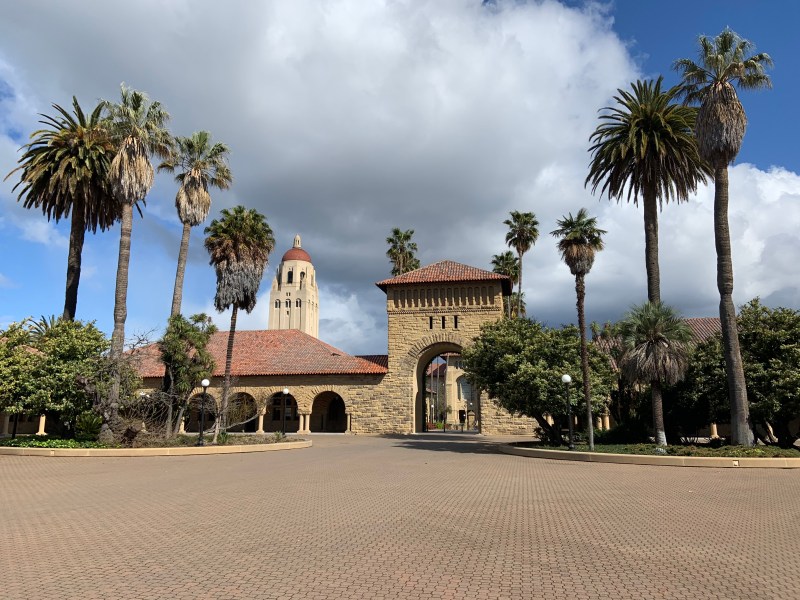On April 2, Provost Persis Drell announced that she and President Marc Tessier-Lavigne would both be taking a 20% “voluntary base pay reduction” as part of Stanford’s response to the COVID-19 crisis. They also asked members of the University’s senior leadership, including the cabinet, to take their own voluntary base pay reductions of 5 to 10%.
But it’s unclear how the school’s executive leadership responded to that request, even as Stanford reconsiders other expenditures in preparation for an economic downturn.
Other than Drell and Tessier-Lavigne, eight out of 12 members of the University’s executive cabinet did not disclose to The Daily whether they had chosen to take the voluntary pay reduction. Of the four who did, only one specified the amount.
“The current situation is imposing hardships and requiring sacrifices of everyone. I am happy to do my part,” wrote Hoover Institution Director Thomas Gilligan in an email to The Daily. He wrote that he took a 10% pay reduction.
Cabinet members Stephan Graham, dean of the School of Earth, Energy and Environmental Sciences; Lloyd Minor, dean of the School of Medicine; and Debra Satz, dean of the School of Humanities and Sciences, also told The Daily that they each took a voluntary pay reduction, but they each declined to specify the amount.
“At a time when many people are being asked to make sacrifices and step up, it is entirely appropriate for the University leadership to do the same,” said Satz, who declined to specify the size of the reduction she took in order to avoid “putting the other deans on the spot.”
Beyond the cabinet, Stanford spokesperson E.J. Miranda told The Daily that “many other members of University leadership, such as deans, vice presidents, vice provosts and other university leaders” were asked to take a voluntary cut — but he declined to specify who was asked. Of 11 additional, non-cabinet senior administrators The Daily reached out to, two disclosed that they took pay cuts.
Robert Wallace, CEO of the Stanford Management Company, volunteered for a 20% pay reduction in mid-March, he told The Daily. He added that “many other Stanford leaders did the same.” Megan Pierson, chief of staff to the president and secretary to the Board of Trustees, also said she took a cut but did not say by how much.
Miranda told The Daily that he was unable to provide additional information about who agreed to take pay reductions, and if so, by how much they reduced their pay.
While not all administrators’ salaries are publicly available, four cabinet members are included in the University’s 990 Tax Filing from August 2018, which discloses reportable compensation from the University. Tessier-Lavigne’s pay was $1,112,306, and Drell’s was $774,116, according to the document, while Minor’s was $1,467,861 and Vice Provost for Undergraduate Education and for the Arts Harry Elam’s was $575,025.
Drell’s request for senior leadership to take pay cuts comes amid a period of particular scrutiny into University finances — and criticism of how the University has made financial decisions around pay for its workers.
The University expects a $100 million deficit by the end of this fiscal year, and Drell has told faculty to “prepare for perhaps the worst” when it comes to budget planning for the next fiscal year. Departments have been asked to come up with plans that include a 15% reduction in endowment payout and 10% reduction in general funds.
In addition to asking senior leadership to take pay cuts, Stanford froze faculty and staff salaries in early April, and the University has stopped hiring new faculty and staff.
Stanford’s financial habits during the pandemic have also been subject to criticism over the University’s relationship with its workers.
The University has committed to paying all regular employees until the end of spring quarter, and said it would work with campus contractors to maintain contracted employees’ income and benefits over the same period. However, union representatives have since argued that those promises were misleading, claiming that Stanford has only offered to help custodial service contractor UG2 provide health insurance to its employees without offering other benefits and continuation pay.
“These firms will be supported in maintaining income and benefits for their employees through June 15,” Miranda reiterated in response to these claims.
Stanford’s endowment is valued at $27.7 billion as of August 2019, a number that activists commonly cite as an indication of the University’s ability to better support workers in this period of crisis.
“Given that Stanford’s endowment is one of the largest in the country, it is unconscionable that the University is not providing its workers the same basic benefits” as peer institutions, argues one petition.
Healthcare workers at Stanford Health Care have also spoken out against Stanford’s policies amid COVID-19. Stanford Health Care’s Temporary Workforce Adjustment program — enacted as a result of financial pressures from the pandemic, according to hospital spokespeople — forces employees to choose between taking paid vacation time or a 20% pay reduction from April 27 to July 4. If they cannot take paid vacation, they can opt for a furlough.
Frontline workers protested the adjustments on May 7, just days before Stanford Health Care was awarded $102 million from the CARES Act and resumed most delayed procedures. However, the influx of funding and revenue has not affected the program. Stanford Health Care spokesperson Julie Grecius maintains that the program is necessary “to help us avoid additional expense reduction measures that could impact staff more significantly.”
This article may be updated if further information regarding administrators’ pay reductions becomes available.
Contact Brian Contreras at brianc42 ‘at’ stanford.edu and Julia Ingram at jmingram ‘at’ stanford.edu.
